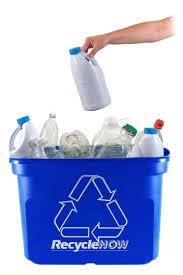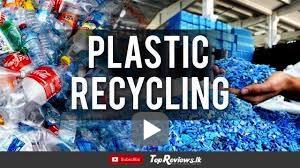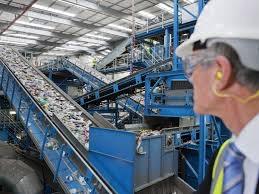 Multinational consumer brands are setting deadlines to recycle plastic packaging in response to consumer and regulatory demands. Coca Cola has established a target of fifty percent recycled content on all packaging by 2030. Nestle will recycle PET (polyethylene terephthalate) in all brands by the end of 2025. Proctor and Gamble will substantially reduce the use of virgin plastic by 2025 and Unilever has a goal to recycle 25 percent of plastic by 2025 and reduce virgin plastic by half. Unfortunately the current reality is far from the intent with most companies using up to ten percent recycled plastic with an emphasis on PET. On average ten percent of plastic is recycled in the U.S. compared to 33 percent in the E.U The two leading restraints to recycling comprise collection and processing.
Multinational consumer brands are setting deadlines to recycle plastic packaging in response to consumer and regulatory demands. Coca Cola has established a target of fifty percent recycled content on all packaging by 2030. Nestle will recycle PET (polyethylene terephthalate) in all brands by the end of 2025. Proctor and Gamble will substantially reduce the use of virgin plastic by 2025 and Unilever has a goal to recycle 25 percent of plastic by 2025 and reduce virgin plastic by half. Unfortunately the current reality is far from the intent with most companies using up to ten percent recycled plastic with an emphasis on PET. On average ten percent of plastic is recycled in the U.S. compared to 33 percent in the E.U The two leading restraints to recycling comprise collection and processing.
The PET segment of the recycling industry emphasizes collection as the major obstacle. It is estimated that only 52 percent of U.S. household have access to a curbside recycling program with less than one-third of potentially recyclable plastics entering a reprocessing stream. Collection intensity is highly variable according to location. In states or municipalities that mandate monetary deposits, collection can attain a level of seventy percent, as in California. At this time only ten states require deposits to encourage recycling.
 Even with a high level of collection, segregation of potentially recyclable materials requires innovation since most municipalities and commercial companies use manual labor to reclaim specific products. Advances in robotics coupled with application of machine vision and complemented by AI, allows installations to visually distinguish among diverse types of containers. AMP Robotics has over 150 recycling installation in operation that can distinguish between polypropylene and polystyrene containers based on visual evaluation.
Even with a high level of collection, segregation of potentially recyclable materials requires innovation since most municipalities and commercial companies use manual labor to reclaim specific products. Advances in robotics coupled with application of machine vision and complemented by AI, allows installations to visually distinguish among diverse types of containers. AMP Robotics has over 150 recycling installation in operation that can distinguish between polypropylene and polystyrene containers based on visual evaluation.
Advances in reprocessing technology resulted in the emergence of industries concentrating on specific plastic materials. DAK Americas is the leading U.S. PET recycler. Their process involves chopping containers in to flakes that are washed. Flakes are then melted under a vacuum to remove volatile compounds from the molten resin. Clarified resin is filtered before conversion to a solid state. Although the process is expensive, potential purchasers of recycled PET are willing to pay a premium to claim recycled content that has marketing appeal. Profitability among early recyclers was limited by narrow margins and low demand. This situation resulted in restructuring of the industry with only two remaining major competitors. DAK has an annual current capacity of 400,000 metric tons with approximately one-quarter diverted into food and beverage containers and the remainder as carpet fibers and for other non-food applications. Following considerable investment, Indorama will have the potential to process 150,000 tons of PET by 2025.
 Recycling of polystyrene has undergone advances through applying solvent extraction. PureCycle Technologies is attempting to increase the rate of polypropylene and polystyrene recycling but the loop is limited by the apparent disinclination of municipalities to collect and separate these plastics that are widely used as packaging in the egg industry. The PureCycle process was developed by Proctor and Gamble and uses super-critical butane for polypropylene. Polystyvert of Canada uses p-cymene as a solvent for polystyrene. Once in solution, the polymer undergoes filtration to remove contaminants. The clarified product is then precipitated by adding heptane. A small commercial-scale plant is now in operation in Montreal to demonstrate technical feasibility. The company is attracting funding to expand capacity since there is an increasing demand for recycled polystyrene.
Recycling of polystyrene has undergone advances through applying solvent extraction. PureCycle Technologies is attempting to increase the rate of polypropylene and polystyrene recycling but the loop is limited by the apparent disinclination of municipalities to collect and separate these plastics that are widely used as packaging in the egg industry. The PureCycle process was developed by Proctor and Gamble and uses super-critical butane for polypropylene. Polystyvert of Canada uses p-cymene as a solvent for polystyrene. Once in solution, the polymer undergoes filtration to remove contaminants. The clarified product is then precipitated by adding heptane. A small commercial-scale plant is now in operation in Montreal to demonstrate technical feasibility. The company is attracting funding to expand capacity since there is an increasing demand for recycled polystyrene.
It is evident that if the egg industry continues to use PET and polystyrene, both of which have obvious benefits as packaging material for eggs, recycling will be necessary. This will be required to satisfy the demands made by consumers and to avert restrictions that are currently in effect or are contemplated, as in Florida. In the interim manufacturers of polystyrene and PET packaging should develop collection programs based on in-store recycling bins to facilitate collection. Publix operates a convenient system that provides consumer satisfaction but more extensive collection programs are necessary to encourage processors to expand capacity and to erect new plants to balance availability of waste with demand for recycled plastic.